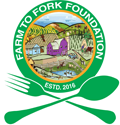An investigation of vegetable production in Iran by using time series models
DOI:
https://doi.org/10.5455/faa.129347Keywords:
Agriculture production, AIC, ARIMA, Quadratic model, RMSEAbstract
Nowadays, agriculture, particularly vegetable production, plays a vital role in the lives of the people of the Islamic Republic of Iran. The proper forecast of harvesting of vegetable production is essential for the agriculture ministry; so that they can make decisions about storage, import or export, etc. In this paper, the prediction of vegetable production in Iran is done in different time series models such as simple random walk, random walk with drift, linear trend, quadratic trend, simple moving average, simple exponential smoothing, double exponential smoothing, exponential trend, s-curve trend, and Auto-Regressive Integrated Moving Average models. Depending on the availability of the required data, a set of six different groups of vegetables (cucumbers and gherkins, eggplants, garlic, onions, pumpkins, squash and gourds, and tomatoes) has been studied for empirical analysis. The two set data from 1961-62 to 2019-20, and from 1990-91 to 2019-20 has been used to forecast the vegetable production for the next eight years from 2020- 21. The total data are divided into training data and testing data. The best models were selected based on the lowest RMSE, minimum values of Akaike Information Criteria, and Schwarz Bayesian Information Criteria. The model diagnosis was performed using Ljung-Box, Runs above and below the median, and Runs up and down tests on ACF and PACF in residuals. For garlic, the quadratic model was selected as the best model; whereas for the rest of the vegetable groups the ARIMA model was determined as the optimum model. For the next eight years, suitable models were forecasted from 2020-21 to 2027-28. Based on the findings, the forecasted production for cucumbers and gherkins is 540.23 to 3021.31, for eggplants is 615.819 to 496.993, for garlic, is 59.1889 to 61.4415, for onions is 2204.69 to 2436.1, for pumpkins, squash, and gourds are 196.068 to 211.065, and for tomatoes is 4399.59 to -4486.66 in 1000 tonnes from 2020-21 to 2027-28. The forecasted data indicate an increase in the production of cucumbers and gherkins, garlic, onions, pumpkins, squash, and gourds; and a decrease in the amount of production of eggplants, and tomatoes in the future. The results can be valuable for the government, and decision-makers to have a suitable plan for crop productions.
Downloads
Downloads
Published
How to Cite
Issue
Section
License
Copyright (c) 2021 by the Author(s)

This work is licensed under a Creative Commons Attribution-NonCommercial 4.0 International License.




















